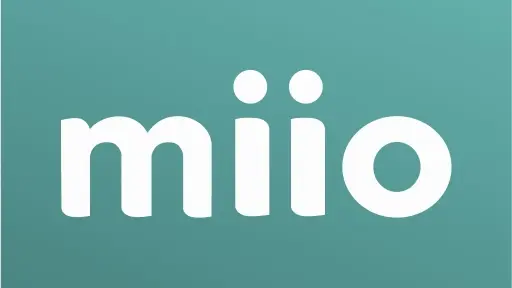Beware of MIio - Electric Car App

Beware of MIio: A Cautionary Tale for Electric Vehicle Rentals
Beware of MIio Renting an electric vehicle (EV) should be a straightforward and eco-friendly experience, right? Wrong. My recent encounter with MIio, the app you’re forced to download to charge your rental EV, has turned what should have been an exciting foray into sustainable transportation into a frustrating, infuriating nightmare. If you’re considering renting an electric vehicle and are told to use MIio for charging, let my story serve as a dire warning. The fine print is a trap, and the consequences can be financially painful and incredibly inconvenient.
The Setup: An Exciting Adventure Turns Sour
I was thrilled to rent an electric vehicle. The world is moving toward greener solutions, and it felt like the perfect choice for my trip. But the moment I picked up the vehicle, I was hit with a dose of reality: to charge the car, I had to download an app—MIio. Little did I know, this app would be the source of a headache that would leave me reeling.
Upon downloading MIio, I was immediately bombarded with a convoluted interface that felt more like a digital maze than a user-friendly charging app. As a first-time user, I struggled to navigate the labyrinth of information. I had to input everything from personal details to vehicle specifics and credit card information. And let me tell you, the frustration was palpable. In a situation where time is of the essence—my rental car was running low on juice—I found myself stuck in a digital quagmire.
The Hidden Fees: A Trap Lurking in the Fine Print
After finally managing to set up the app, I was faced with a shocking revelation: MIio doesn’t charge you based on the actual amount of electricity you use. Instead, they deduct from a “wallet” that you must load with funds upfront. You read that right—your charges are based on an estimate, not actual usage. This opaque pricing structure is a recipe for disaster. I loaded money into my wallet thinking I’d only pay for what I used. Boy, was I wrong.
To add insult to injury, whatever you load into this wallet is essentially a hostage—money that can only be used within the app and is non-refundable. I ended up with a $22 charge that I never anticipated, and after returning the vehicle, I was informed that this amount was now permanently tied up in my MIio wallet. When I contacted customer service for a refund, they bluntly told me it was non-refundable and could be used for future charges over the next three years. Three years! What kind of service ties up your money like that?
The Illusion of Convenience: What They Don’t Tell You so Beware of MIio
The MIio app touts convenience, but it’s anything but. The notion that you can effortlessly charge your vehicle becomes an uphill battle laden with obstacles. For those who are not tech-savvy or unfamiliar with EV charging, this app can be a monumental challenge. While there are other charging apps on the market that are transparent about fees and allow you to pay only for what you use, MIio has buried the crucial details in fine print, making it nearly impossible to grasp the full scope of the charges.
In a world where consumers are constantly bombarded with choices, MIio’s business model stands out as a prime example of exploitation. By obscuring their charging methodology and trapping users in a non-refundable wallet system, they effectively capitalize on the ignorance of the average user. This is not just an oversight; it’s a calculated strategy to maximize their profits at the expense of unsuspecting customers.
Why Transparency Matters: The Call for Change
This experience has underscored a critical issue in the EV rental and charging landscape: transparency. As electric vehicles gain traction and more consumers transition to sustainable alternatives, it’s imperative that the companies involved operate with honesty and clarity. Consumers deserve to know exactly what they’re paying for and how it’s calculated.
Other charging apps have figured it out. They allow users to pay for what they actually consume, with no hidden fees and no funds locked away in a wallet that feels more like a prison than a feature. If MIio can’t adapt to this standard, it risks alienating users and damaging its reputation in an industry that is already fraught with challenges.
Conclusion: Avoid MIio at All Costs
In summary, my experience with MIio has been nothing short of a warning shot across the bow for anyone considering renting an electric vehicle. The app’s convoluted interface, hidden fees, and non-refundable wallet system create a perfect storm of frustration and dissatisfaction. This is not just a case of poor service; it’s a glaring example of corporate greed masked as convenience.
If you’re in the market for an electric vehicle rental, heed this advice: steer clear of MIio. Seek out alternatives that prioritize transparency and consumer rights. Don’t let yourself become another victim of this deceptive system. The world of electric vehicles should be about progress and innovation, not the frustration of hidden fees and trapped funds. Stand up for your rights as a consumer, and make your voice heard—because no one should have to endure the nightmare that MIio has become for me. Beware of MIio



One thought on “Beware of MIio”
Avoid MIio
I had a frustrating experience with Miio electric vehicle. Their customer service was terrible, and they overcharged my credit card without explanation. I also faced issues with the wallet system, but since I own my own car, I used the remaining balance and closed my account.
I’ll never use MIio again and wouldn’t recommend them to anyone. There are better options out there!